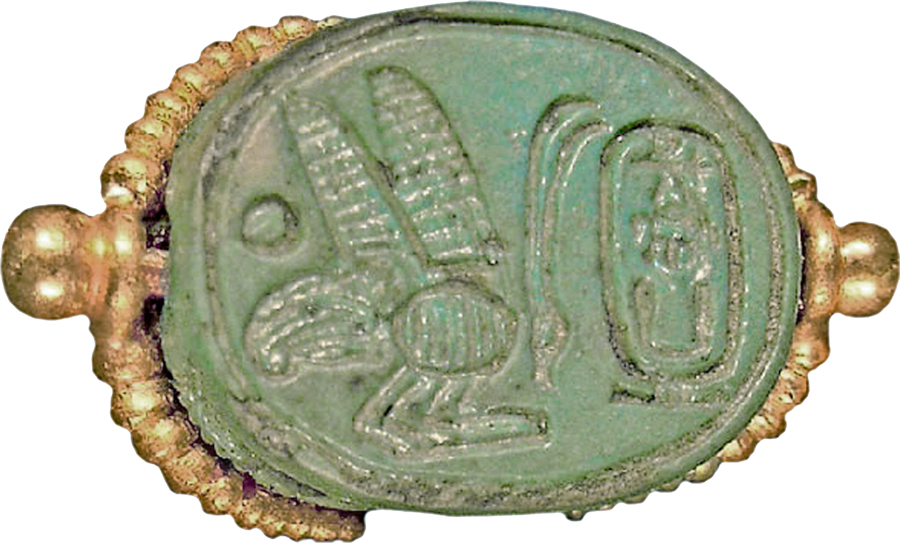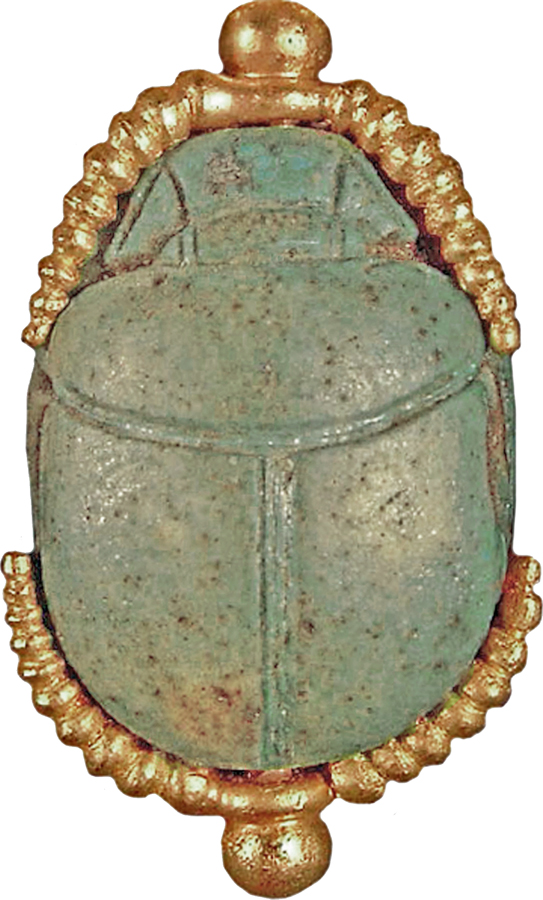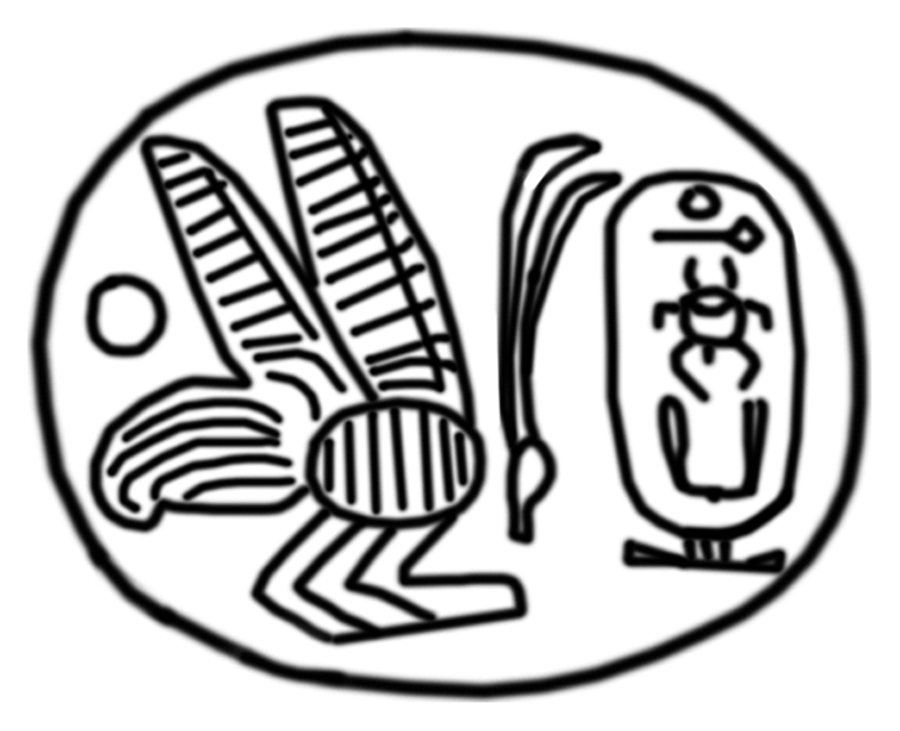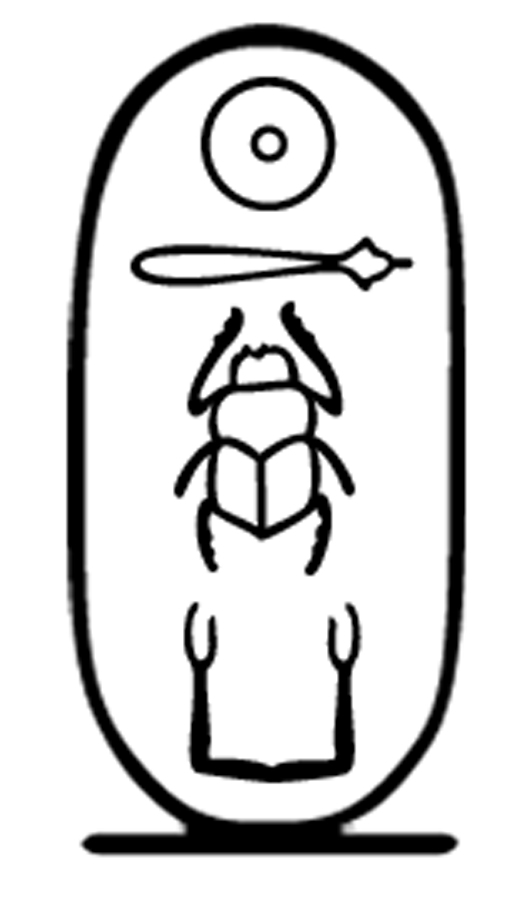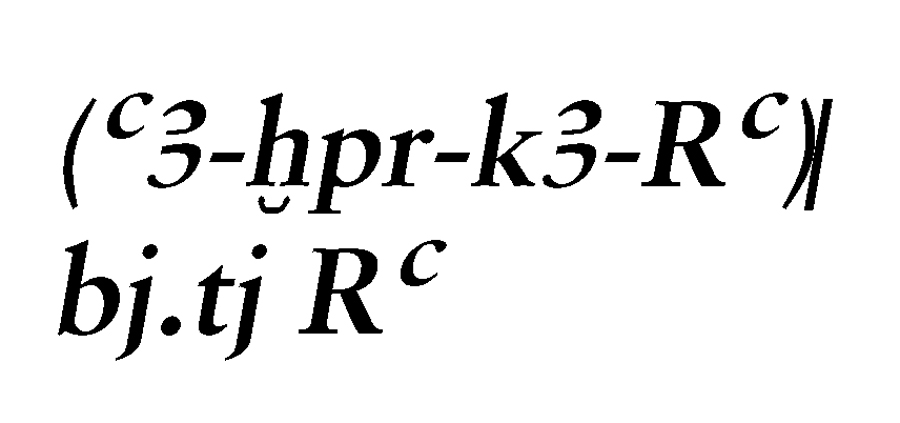Scarab from Egyptian-Style Necklace
(Ancient Egypt and Nubia )
The ancient Egyptians believed that the dung beetle, the Scarabaeus sacer, was one of the manifestations of the sun god. Representations of these beetles were used as amulets, and for ritual or administrative purposes.
This scarab has a bottom inscription with a vertical cartouche containing the name of King Thutmose I. The royal cartouche is combined with a large bee and a very small sun disc; an oval line frames the whole inscription.
The highest point of the back is the elytron (wing cases). Double lines separate pronotum (dorsal plate of the protorax) and elytron, as well as the wing cases. The incised lines arge thick, and the line flow regular. The semicircular head is flanked by quarter-spherical eyes, which are separated from the head with double lines. The trapezoidal side plates have outer borderlines, and a large clypeus (front plate) is marked. The sides show deeply carved extremities in natural form. The round-oval base is symmetrical.
The scarab is longitudinally pierced, was originally mounted or threaded, and used as an amulet. It should secure royal authority (cartouche) and divine (solar) kingship (bee) for this ruler, and provide a private owner with the royal patronage of the current ruler.
The combination of a large bee with a small sun disk behind its body is rare. The round-oval forms of the scarab, as well as the shape of the bee with very long curved feelers, are typical for the early 18th Dynasty.
Inscription
Provenance
Provenance (from the French provenir, 'to come from/forth') is the chronology of the ownership, custody, or location of a historical object. Learn more about provenance at the Walters.
Henry Walters, Baltimore, 1903 [mode of acquisition unknown]; Walters Art Museum, 1931, by bequest.
Exhibitions
| 1979-1980 | Jewelry - Ancient to Modern. The Walters Art Gallery, Baltimore. |
Geographies
Egypt (Place of Origin)
Measurements
H: 9/16 x W: 1/2 x D: 3 1/8 in. (1.5 x 1.2 x 8 cm)
Credit Line
Acquired by Henry Walters, 1903
Location in Museum
Not on view
Accession Number
In libraries, galleries, museums, and archives, an accession number is a unique identifier assigned to each object in the collection.
In libraries, galleries, museums, and archives, an accession number is a unique identifier assigned to each object in the collection.
57.1530.13

